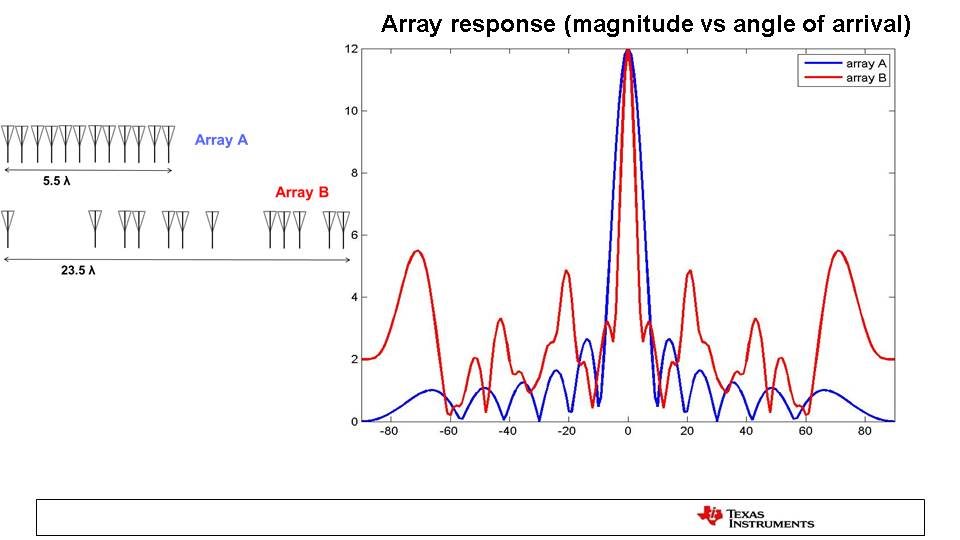Hi,
I am referring swra554 app note on angular resolution. Can I assume the final angular resolution in azimuth or elevation depends only on maximum number of virtual Rx antennae in that dimension. i.e.: Non uniform array having 2 Rx virtual antennae in one column and 4Rx virtual Antennae in another column will have angular resolution of 2/4 rad(2/N).
Thanks
Siva


